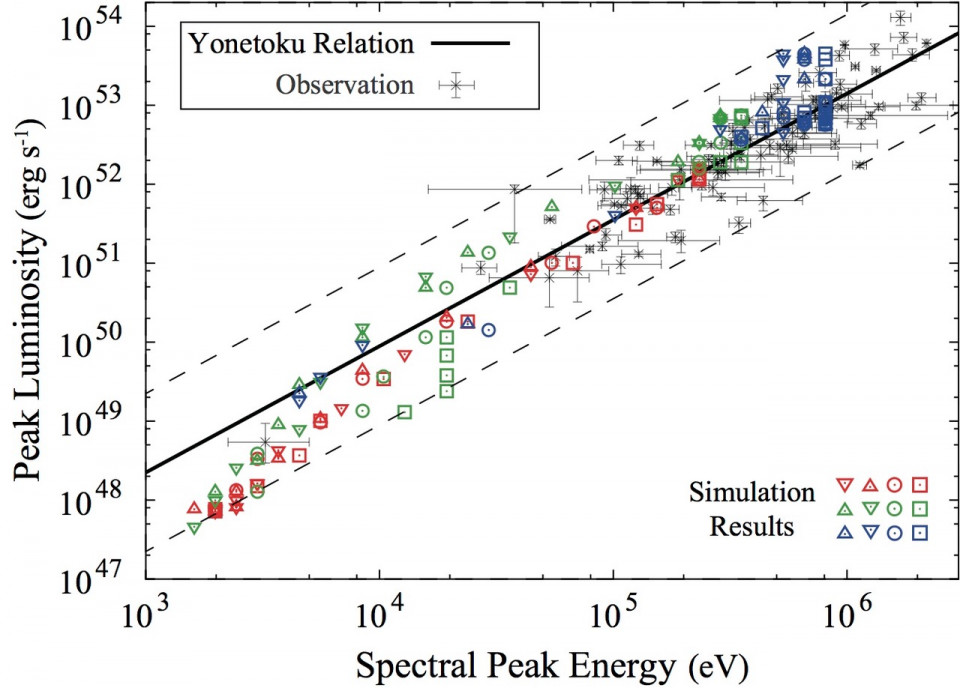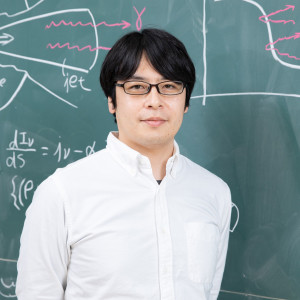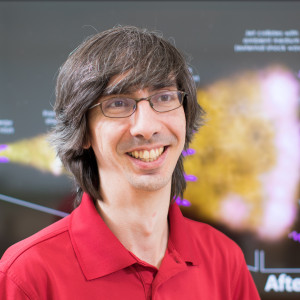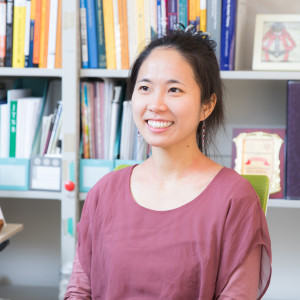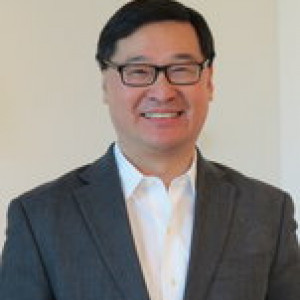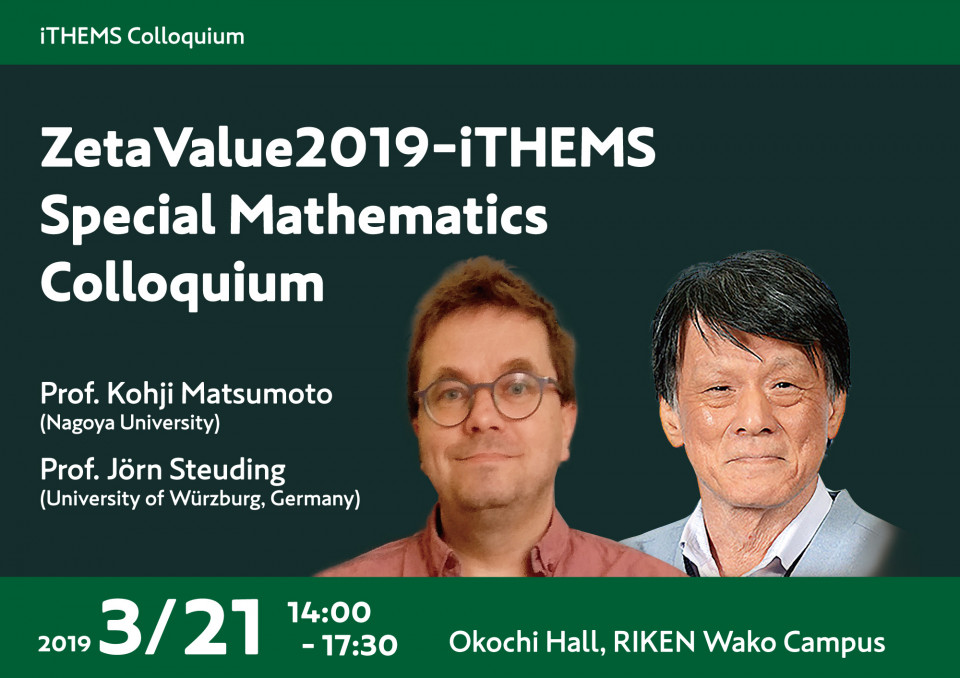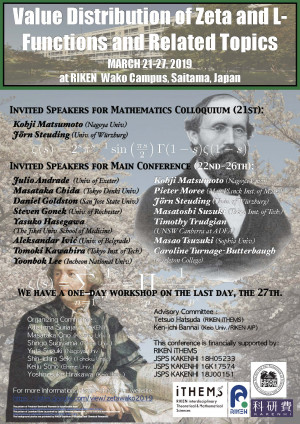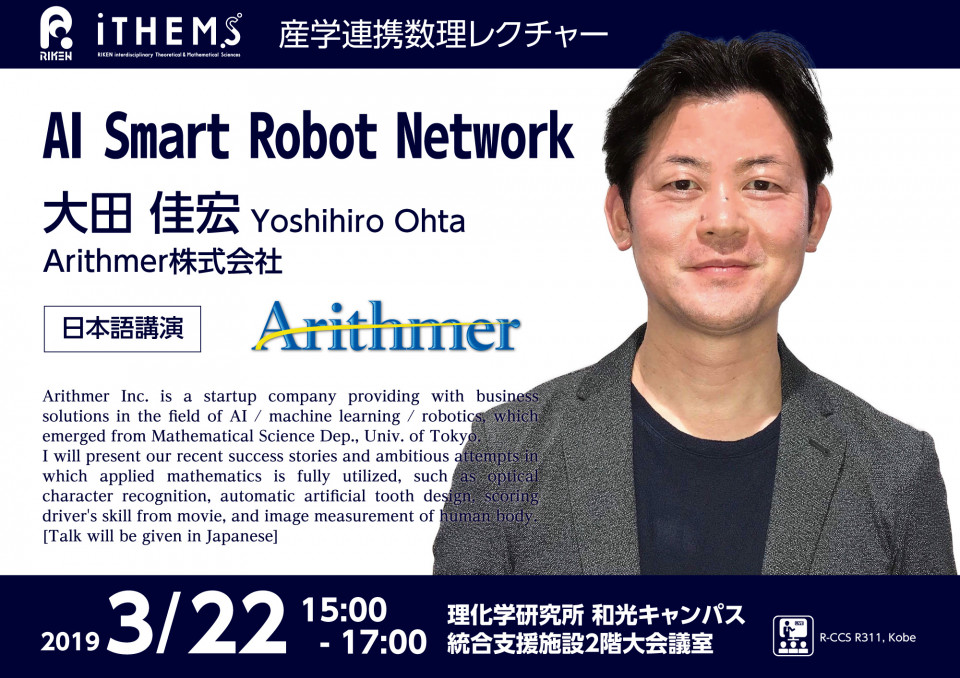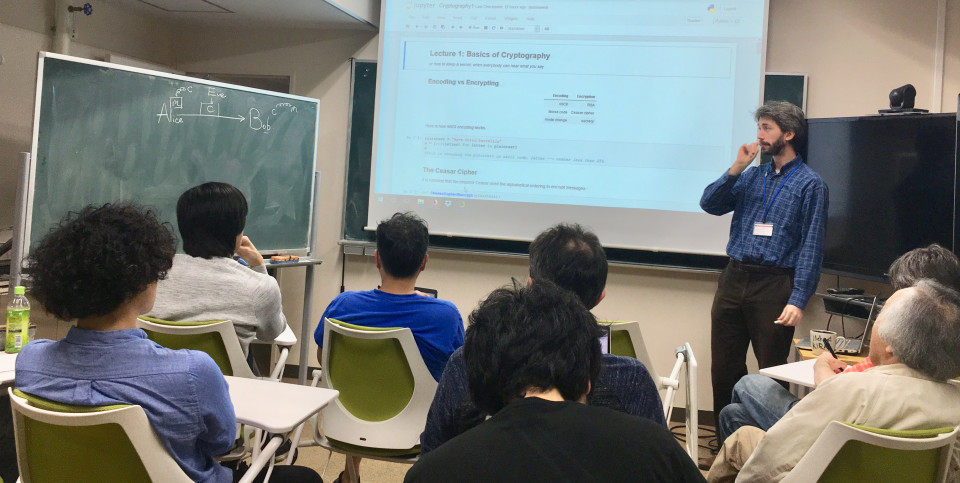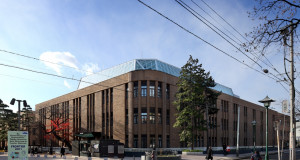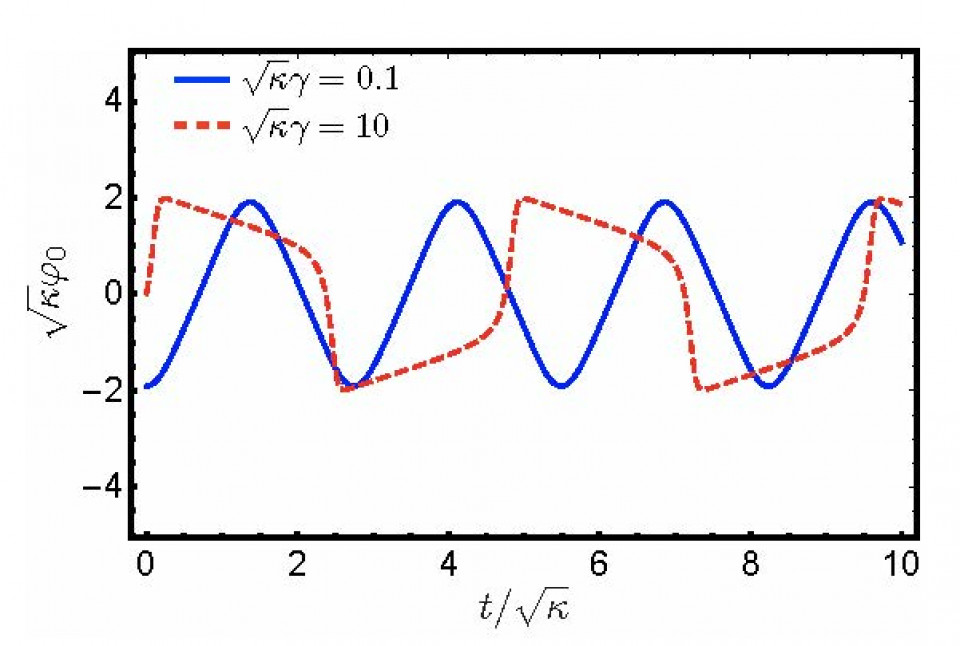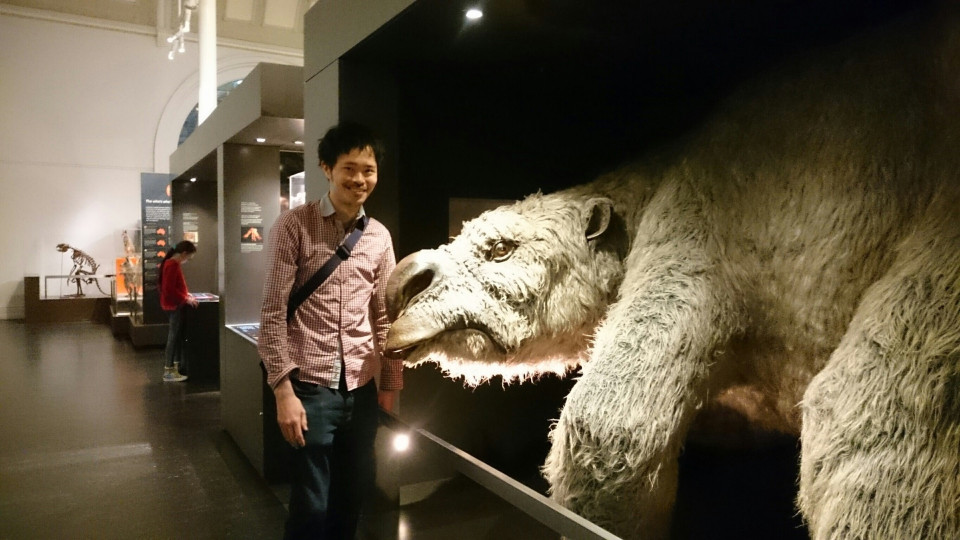Volume 45
Back to Newsletter List
Hot Topic
Summary of nuclear astrophysics workshop at Hokkaido University
2019-03-14
Nuclear astrophysics workshop was held at Hokkaido University from 6th to 8th of March, 2019, under the support of iTHEMS as well as other institutions and centers. Major issues of this meeting are nuclear data and heavy-element synthesis.
The meeting was very successful with around 60 researchers coming from various fields such as nuclear physics, particle physics, astronomy, astrophysics, astrochemistry, earth and planetary physics. Details of this workshop can be found at their offical web site.
Research News
Papers soon-to-be published in Nature Communications
2019-03-12
A recent paper authored by several iTHEMS members has been accepted for publication in Nature Communications. The authors from iTHEMS include Hirotaka Ito (ABBL /iTHEMS), Shigehiro Nagataki (ABBL/iTHEMS) and Don Warren (iTHEMS). Congratulations! There will be a press release. Here is the explanation on the article by Hirataka Ito:
"The photospheric origin of the Yonetoku relation in gamma-ray bursts” by Hirotaka Ito, Jin Matsumoto, Shigehiro Nagataki, Donald C. Warren, Maxim V. Barkov & Daisuke Yonetoku Accepted for publication in Nature Communications. arXiv:1806.00590
Gamma-ray bursts (GRBs), an intense flash of gamma-rays that is observed almost every day, are the brightest event in the Universe. Decades of studies have revealed that they are originating from a relativistic jet launched at the death of massive star. However, exactly how the gamma-rays are emitted from the jet is still veiled in mystery. One unresolved question is the origin of the correlation between the spectral peak energy and peak luminosity discovered in observations. This “Yonetoku relation” is the tightest correlation found in the properties of GRB emission, providing the best diagnostic for the emission mechanism.
In this study, we focused on the so-called “photospheric emission” model which is one of the leading models for the emission mechanism of GRBs. To test the validity of the model, global dynamics of relativistic jet and radiation transfer must be taken into account. To tackle this issue, we performed three-dimensional relativistic hydrodynamical simulations and radiation transfer calculations to evaluate photospheric emission from relativistic jet that is breaking out of massive star envelope. Our simulations revealed that the Yonetoku relation is reproduced as a natural consequence of the jet-stellar interactions. This result strongly suggests that photospheric emission is the emission mechanism of GRBs.
Upcoming Events
Seminar
Number Theory Seminar
On special values of the multiple zeta functions of Arakawa-Kaneko type
March 16 (Sat) 15:00 - 17:30, 2019
Yasuo Ohno (Professor, Mathematical Institute, Tohoku University)
Yuta Suzuki (JSPS Research Fellow, Graduate School of Mathematics, Nagoya University)
15:00~16:00: Yasuo Ohno (Tohoku University)
"On special values of the multiple zeta functions of Arakawa-Kaneko type"
Arakawa-Kaneko's zeta function is a kind of generalization of the Riemann zeta function by using polylogarithms. I am planning to introduce two topics on combinatorics around its values at positive or negative integral points. This talk is based on joint work with N. Kawasaki.
16:20~17:20: Yuta Suzuki (Nagoya University)
"On relatively prime amicable pairs"
A famous Greek mathematician, Pythagoras tried to find symbolical meanings in numbers. One famous example of such symbolism in numbers is amicable pair, which was introduced as a symbol of friendship. A pair of positive integers $(M,N)$ is called an amicable pair if the sum of all divisors of $M$ except $M$ itself is equal to $N$ and the sum of all divisors of $M$ except $N$ itself is also equal to $M$. The smallest example is $(220,284)$.
Even amicable numbers are introduced more than 20 centuries ago, most of their properties are still unknown. For example, the infinitude of amicable pairs has not yet been proven. In this talk, we pick up a conjecture of Gmelin (1917), which claims that there is no relatively prime amicable pairs, and try to introduce some atmosphere of "modern elementary number theory". In particular, we improve Pollack's partial result (2015) on Gmelin's conjecture.
Venue: Seminar Room #160, 1F Main Research Building, RIKEN
Event Official Language: English
External Event
RIKEN Day: Let's Talk with Researchers! "The Wonder of Numbers"
March 17 (Sun) 14:00 - 16:00, 2019
Ade Irma Suriajaya (Special Postdoctoral Researcher, RIKEN Interdisciplinary Theoretical and Mathematical Sciences Program (iTHEMS))
In the March RIKEN Day, we will have a talk with Ade Irma Suriajaya, a mathematician who is researching "prime numbers", on the theme of "the wonder of numbers".
See related links for details.
Venue: Science Museum
Event Official Language: Japanese
Seminar
Machine Learning for Intelligent Multiscale Modeling of Platelet Dynamics
March 19 (Tue) 15:00 - 17:00, 2019
Yuefan Deng (Professor, Applied Mathematics Department, Stony Brook University, USA)
Multiscale modeling in biomedical engineering is gaining momentum because of progress in supercomputing, applied mathematics, and quantitative biomedical engineering.
For example, scientists in various disciplines have been advancing, slowly but steadily, the simulation of blood including its Olowing and the physiological properties of such components as red blood cells, white blood cells, and platelets. Platelet activation and aggregation stimulate blood clotting that results in heart attacks and strokes causing nearly 20 million deaths each year.
To reduce such deaths, we must discover new drugs. To discover new drugs, we must understand the mechanism of platelet activation and aggregation. To model platelets’ dynamics involves setting the basic space and time discretization in huge ranges of 5-6 orders of magnitudes, resulting from the relevant fundamental interactions at atomic, to molecular, to cell, to Oluid scales.
To achieve the desired accuracy at the minimal computational costs, we must select the correct physiological parameters in the force Oields such as the Morse potential and Hooke’s law as well as the spatial and temporal discretization, by machine learning.
We demonstrate our preliminary results of speeding up a multiscale two-platelet aggregation simulation, while maintaining sufOicient accuracy, by nearly one order of magnitude, compared with traditional algorithm that uses the smallest of all temporal and spatial scales in order to capture the Oinest details of the dynamics. We present our analyses of the accuracies and efOiciencies of the representative modeling. We will also outline the general methodologies of multiscale modeling of cells at atomic resolutions.
Venue: 224-226, Main Research Building
Event Official Language: English
Colloquium
iTHEMS Colloquium
ZetaValue2019-iTHEMS Special Mathematics Colloquium
March 21 (Thu) 14:00 - 17:30, 2019
Kohji Matsumoto (Professor, Nagoya University)
Jörn Steuding (University of Würzburg, Germany)
Prof. Kohji Matsumoto (Nagoya University)
"An overview of the theory of multiple zeta-functions"
Multiple zeta-functions are generalizations of the Riemann zeta-function, and its theory has been rapidly developed in these decades. It is connected with various fields of mathematics and mathematical physics. In this talk I will give an overview of some part of recent developments, mainly from the analytic viewpoint.
Prof. Jörn Steuding (University of Würzburg, Germany)
"On the Infinite in Number Theory"
Beginning with two simple examples from elementary number theory (one of diophantine origin and one of arithmetical nature), we discuss the role of “infinity” in number theory. We touch upon topics like how to find good rational approximations to irrational quantities and the distribution of prime numbers. We conclude with a motivation of the big open question in this field, namely, the Riemann hypothesis (one of the six unsolved millennium problems) and the Langlands program.
Venue: Okochi Hall, 1F Laser Science Laboratory, RIKEN
Event Official Language: English
Workshop
Value distribution of zeta and L-functions and related topics
March 22 (Fri) - 27 (Wed) 2019
March 22–26, 2019
Main Conference (invited talks, posters and a limited number of short contributed talks)
Welcome Reception: March 22, 2019 (18:00~20:00)
Conference Dinner: March 25, 2019 (18:30~21:00)
March 27, 2019 (9:30~17:00)
One-day Workshop (a series of short contributed talks by young researchers to facilitate active discussions)
ORGANIZING COMMITTEE
Ade Irma Suriajaya (RIKEN)
Yoshinosuke Hirakawa (Keio University)
Masataka Ono (Kyushu University)
Shin-ichiro Seki (Tohoku University)
Keiju Sono (Ehime University)
Shingo Sugiyama (Nihon University)
Yuta Suzuki (Nagoya University)
ADVISORY COMMITTEE
Tetsuo Hatsuda (RIKEN iTHEMS)
Kenichi Bannai (Keio University, RIKEN AIP Center)
Venue: Okochi Hall, 1F Laser Science Laboratory, RIKEN / Large Meeting Room, 2F Welfare and Conference Building (Cafeteria), RIKEN
Event Official Language: English
Lecture
Academic-Industrial Innovation Lecture
AI Smart Robot Network
March 22 (Fri) 15:00 - 17:00, 2019
Yoshihiro Ohta (The University of Tokyo / Arithmer Inc.)
Arithmer Inc. is a startup company providing with business solutions in the field of AI / machine learning / robotics, which emerged from Mathematical Science Dep., Univ. of Tokyo.
I will present our recent success stories and ambitious attempts in which applied mathematics is fully utilized, such as optical character recognition, automatic artificial tooth design, scoring driver's skill from movie, and image measurement of human body.
Venue: Large Meeting Room, 2F Welfare and Conference Building (Cafeteria), RIKEN
Broadcast: R311, Computational Science Research Building, R-CCS, Kobe Campus, RIKEN
Event Official Language: Japanese
Workshop
iTHEMS-AIMR Joint Workshop "Medicine meets Mathematics"
March 29 (Fri) 10:00 - 17:00, 2019
Speakers:
Takuya Ueda (Tohoku Univ. Hospital)
Noriaki Ogawa (RIKEN iTHEMS)
Takayuki Sakajo (Math. Dep., Kyoto Univ.)
Yoshiki Sugitani (AIMR, Tohoku Univ.)
Jun Seita (RIKEN MIH)
Tetsuro Sekine (Nippon Medical School Hospital)
Masato Taki (RIKEN iTHEMS)
Kenji Takizawa (Faculty of Sci. and Eng., Waseda U.)
Hosted by SUURI-COOL Sendai(iTHEMS-AIMR Mathematical Science Cooperative Lab.)
Co-hosted by iTHEMS, AIMR
Sponsored by CREST "New Challenges for Mathematical Modeling in Clinical Medicine"
Organizers: Hiroshi Suito (AIMR), Tetsuo Hatsuda (iTHEMS)
Venue: 3rd floor Lecture Theater, Katahira Campus, Tohoku University
Event Official Language: Japanese
Seminar
Tensor Berry connections and their topological invariants
April 2 (Tue) 14:00 - 15:00, 2019
Giandomenico Palumbo (Researcher, Université Libre de Bruxelles, Belgium)
The Berry connection plays a central role in our description of the geometric phase and topological phenomena. In condensed matter, it describes the parallel transport of Bloch states and acts as an effective "electromagnetic" vector potential defined in momentum space. Inspired by developments in high-energy physics, where higher-form Kalb-Ramond gauge fields were introduced, I hereby explore the existence of "tensor Berry connections" in quantum matter. My approach consists in a general construction of effective gauge fields, which I ultimately relate to the components of Bloch states. I apply this formalism to various models of topological matter, and I investigate the topological invariants that result from generalized Berry connections. I introduce the 2D Zak phase of a tensor Berry connection, which I then relate to the more conventional first Chern number; I also reinterpret the winding number characterizing 3D topological insulators to a Dixmier-Douady invariant, which is associated with the curvature of a tensor connection. Besides, my approach identifies the Berry connection of tensor monopoles, which are found in 4D Weyl-type systems in ultracold atoms.
Venue: Seminar Room #160, 1F Main Research Building, RIKEN
Event Official Language: English
Math Lecture
Introduction to Public-Key Cryptography
Introduction to Public-Key Cryptography (10th)
April 9 (Tue) 13:30 - 15:30, 2019
Eren Mehmet Kıral (Visiting Scientist, RIKEN Interdisciplinary Theoretical and Mathematical Sciences Program (iTHEMS) / Visiting Scientist (JSPS Research Fellow), Faculty of Science and Technology, Sophia University)
Venue: Seminar Room #160, 1F Main Research Building, RIKEN
Event Official Language: English
School
g-RIPS Sendai 2019
June 17 (Mon) - August 9 (Fri) 2019
GRIPS (Graduate-level Research in Industrial Projects for Students)-Sendai program was held last summer (June 18 - Aug. 10, 2018) with the support of iTHEMS as well as other institutions and companies. Two industrial projects were launched under the suggestion of TOYOTA and NEC, and two teams composed of US and Japanese students have worked intensively to find solutions of these problems. See for the details of the GRIPS program and the summary of activities at GRIPS-Sendai 2018.
This year, GRIPS-Sendai program will be held from June 17 through Aug. 9, 2019 with a larger scale under the support of iTHEMS. Stay tuned for further information.
Event Official Language: English
Featured Paper of the Week
Diffusive Nambu-Goldstone modes in quantum time-crystals
2019-03-12
Symmetry and its breaking is one of the most important notions in modern physics. It is known that when a continuum symmetry is spontaneously broken, there appears a gapless excitation called the Nambu–Goldstone (NG) mode. Such a mode appears in several length scales. In the femtometer scale, pions that are responsible for nuclear force, are the NG modes associated with chiral symmetry breaking. In the meter scale, the sound mode in solid is the NG mode associated with spontaneous breaking of translational symmetry.
In this paper, we study the NG modes associated with spontaneous breaking of the continuous time-translation symmetry in an open quantum system.
For this purpose, we study a system with a van der Pol type nonlinear-friction. By considering small fluctuations around a time-periodic mean-field solution, we find that a gapless collective mode, which is a diffusive one, necessarily appears; this is nothing but the NG mode of a time crystal. We also show that noncommutative breaking of the time-translation and U(1) symmetries results in mixing of the NG modes, and the (typically) propagating NG mode appears.
Reference:
Tomoya Hayata, Yoshimasa Hidaka
"Diffusive Nambu-Goldstone modes in quantum time-crystals"
arXiv: 1808.07636
Person of the Week
Self-introduction: Ryosuke Iritani
2019-03-11
Hi, what's up! I'm Ryosuke (Ryo) Iritani. I'm originally from Kobe and did my biology and math undergrad at Kyoto University in Japan. I started my Ph.D. with Yoh Iwasa at Kyushu University in 2011 and worked as a research fellow (DC1) from 2013, visiting Lausanne (Switzerland) and Montpellier (France) to improve my theoretical skills. I then received Ph.D. in 2016 and started my postdoc at the University of California, Berkeley (as a fellow at the University of Exeter, the UK).
I am broadly interested in the field of evolutionary ecology, with a special focus on evolutionary game theory in structured populations. I usually start with my modelings with a motivation to understand ecological phenomena, but I am really keen on developing the general theory of evolutionary ecology. I believe scientific collaboration is the prerequisite to do "good" science, and am therefore always open to collaboration opportunities. My current office is at Kyoto University, so please come talk to me.
I like coffee, soccer, typographical fonts, cooking, math, and living organisms (with a special passion for insects).
If you would like to cancel your subscription or change your email address,
please let us know via our contact form.
Copyright © iTHEMS, RIKEN. All rights reserved.



